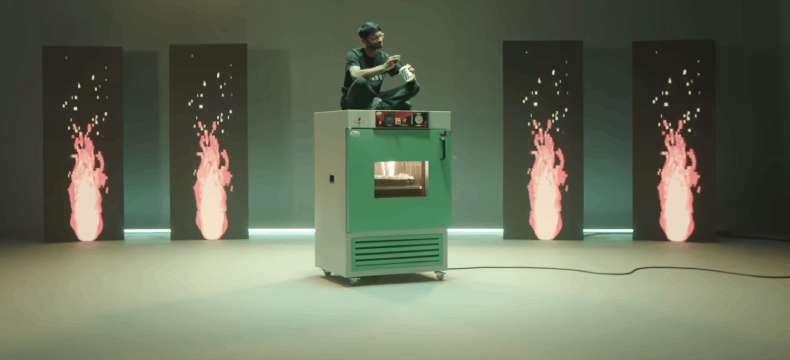
Shorter version on audio:
YouTube:
Spotify:
Full post:
The electric 2-wheeler segment in India has a problem. A big reputation crisis, to be precise.
Even though incidents of electric scooters going up in flames are far and few (relative to the total sales), a few incidents are enough to seed fear and doubt in people’s minds because this is a new category of vehicles.
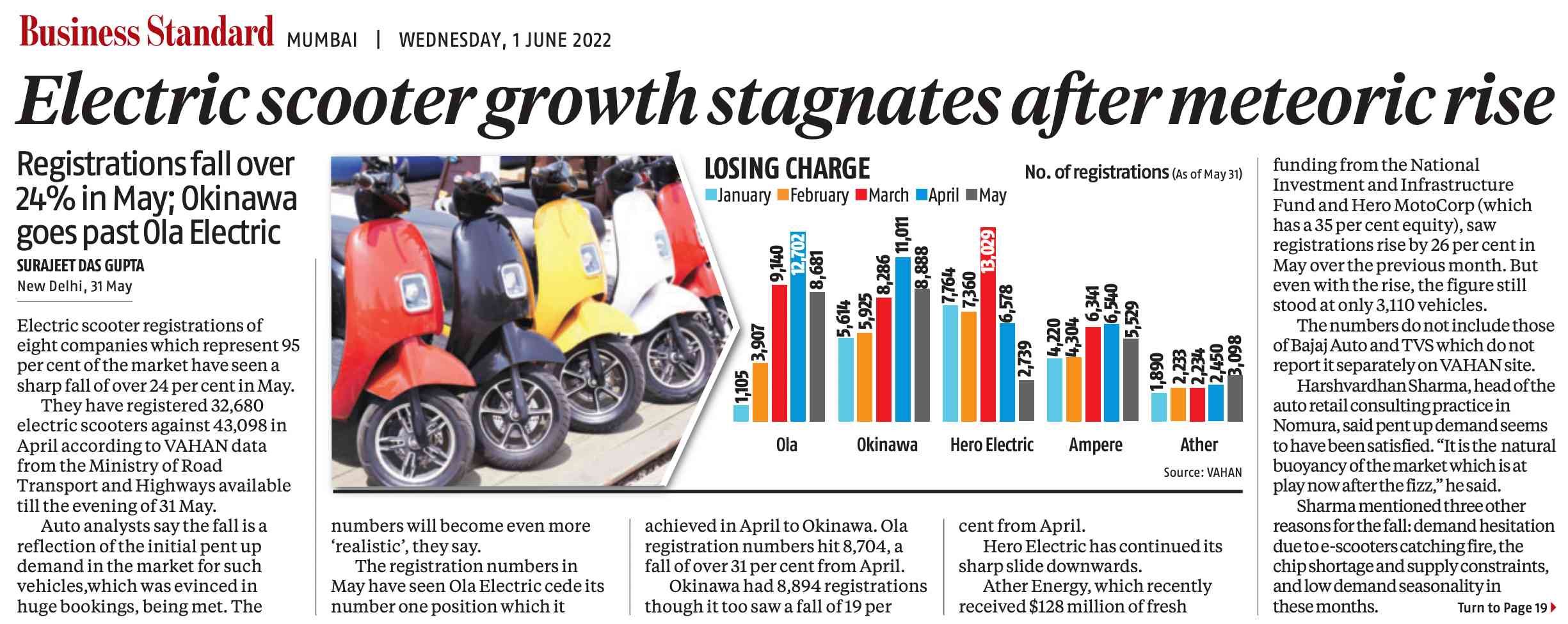
So far, no electric scooter brand has communicated to assure people of the safety of their products through marketing and advertising. They have cautiously and sporadically reacted to the media asking them to comment on the spontaneously combusting scooters. Rajiv Bajaj had more recently, in his characteristic outspoken style, taken a giant swipe at many of his rivals.
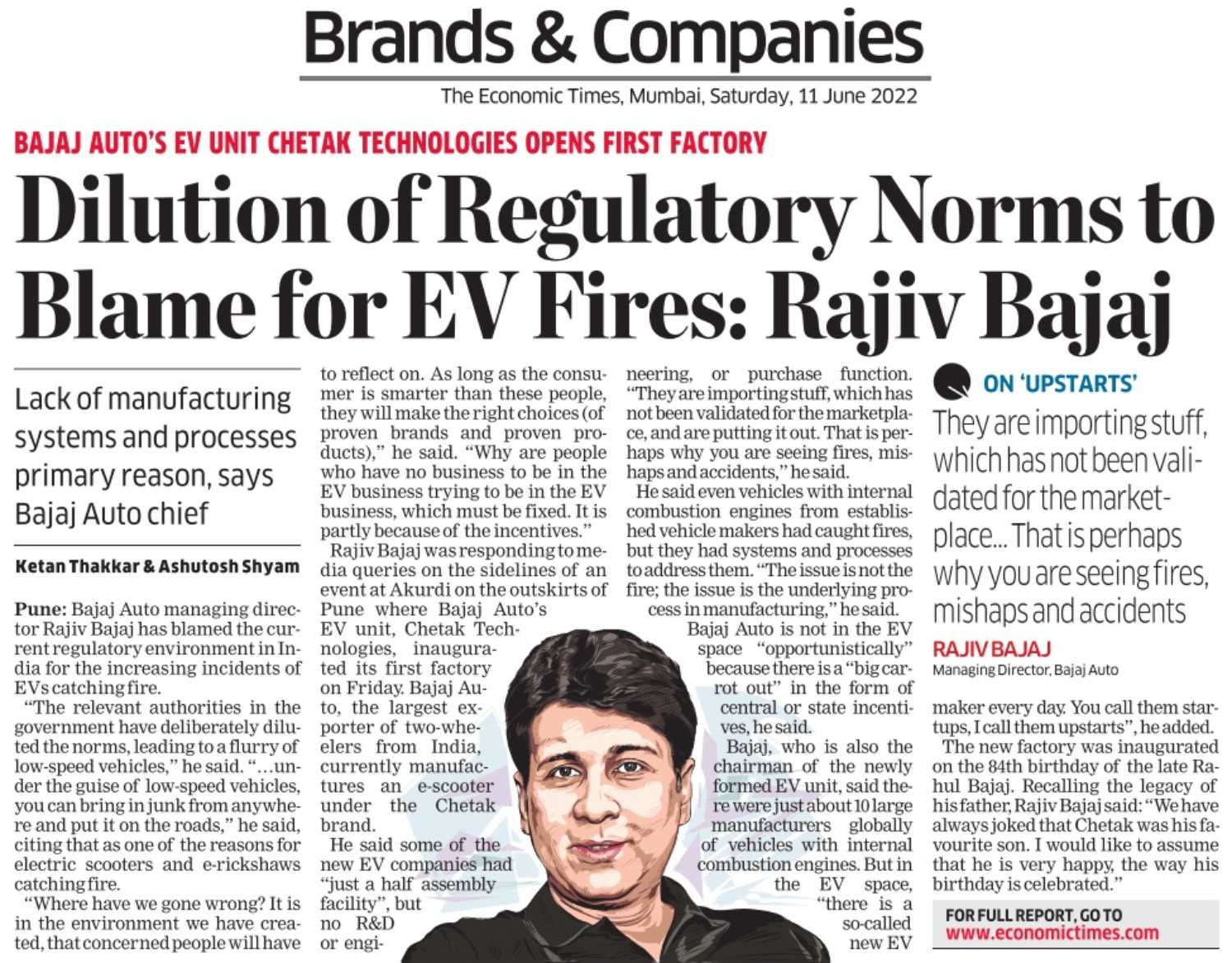
Given this backdrop, it’s good to see at least one electric scooter brand address this issue head-on, that too using marketing and not just PR. It’s not one of the burning brands (pun may be intended, I don’t know!), but Ather – a brand that has not been affected by the fire, real and PR, and has not been named so far in this context.
However, Ather is also one of the lesser sold models in relative terms.
The more interesting aspect is the creative route Ather has taken to add their perspective on the burning issue (pun intended) and convince people why they need to choose Ather over the rivals like Ola, Okinawa, Hero, or Ampere.
The route taken by Ather involves product demonstration, a very, very old and oft-used advertising technique. The premise is simple: ‘show, don’t tell’!
But Ather does not demonstrate the actual product (scooter) itself – it chooses to demonstrate the specific element inside a scooter that’s in news for all the wrong reasons.
Ather’s execution is mighty convincing given the kind of casual humor and nonchalance with which they land the message. For starters, Shreyas Seethapathy is real – you can LinkedIn-search him and be convinced that he is really working on what the ad claims. That, in itself, starts the narrative on an authentic note, and this is important when they start making more incredible claims.
Then, he is seen eating ice cream very casually. As the shot zooms out, you see that he is sitting on a very odd spot – above what seems like an industrial-size electric oven/furnace! Something is cooking inside, but you don’t realize what it is (understandably – it is not instantly recognizable) till the voice-over explains it to you.
And to add fuel to fire (guilty as charged – pun intended, again), there are four animated fires burning in the background 🙂 What they denote is entirely left to your imagination in a clever creative decision!
Ather’s first marketing salvo into the electric scooters burning issue is terrific. It doesn’t show the scooter at all, but addressed the problem head-on, using punchy humor in a very well-conceived demonstration of that which actually needs to be demonstrated.
On the back of Ather’s new campaign, it’s perhaps useful to take a look at some of the other famous product demonstrations in advertising.
1. Union Carbide: My absolute favorite is from Union Carbide – yes, the same dastardly brand that was involved in the deadly Bhopal Gas tragedy. This 1967/68 ad is perhaps the reference for Ather’s ad too since both involve fire and heat in a specific context. The ad agency was Young & Rubicam, and the spot was directed by Neil Tardio Sr.
He has even commented below the ad to someone who asked how many chicks were killed during the filming of this ad.
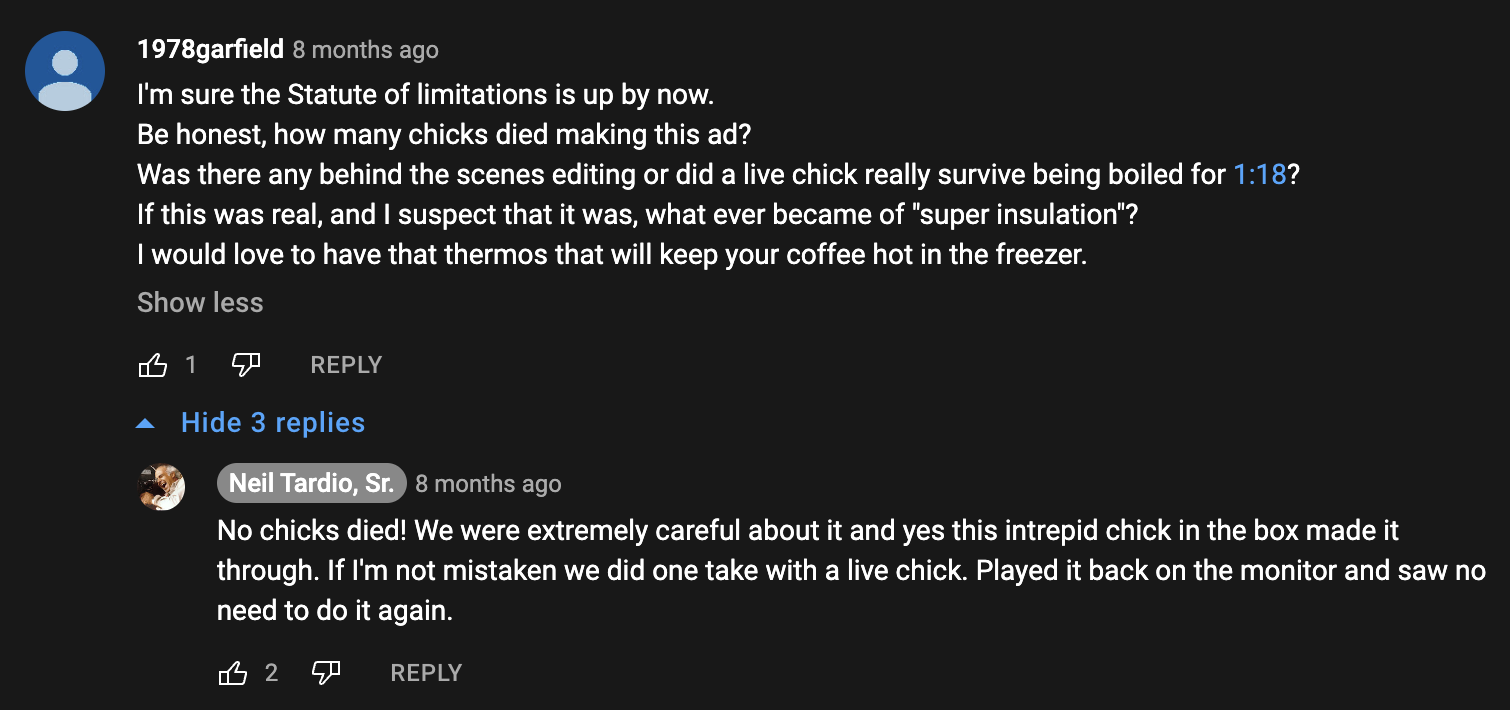
2. Corning Vision cookware: This late-80s is a similar to the Union Carbide ad since this too involves high heat to make a point 🙂 But while the former was a primarily B2B product pitch with an indirect consumer-level reference, this one’s a B2C product meant for the kitchen!
3. Pilkington Glass: This one ups the ante when it comes to product demonstrations in advertising because unlike the earlier two ads, this puts an actual human in a position of life-threatening danger in the name of demonstration (a B2B product, though).
4. American Tourister: Have you ever wondered what happens to your luggage after you give it to a hotel bell boy or check it in with an airline? American Tourister for the agency DDB to imagine that and the result was the iconic ad of a gorilla trying to wreck luggage! The original ad was from 1970, set in a hotel!
The ad was so successful that DDB went on to make two sequels!
It was totally ironic that Samsonite, American Tourister’s rival at that time (and was a much larger brand in comparison) told The New York Magazine back in 1983 after the ads went off the air that people strongly identified the ad with their brand, and not as much with American Tourister 🙂
Even more interesting is the factor of authenticity in product demonstrations. Remember the question posed to the director of the Union Carbide ad above? Here’s the story of Don McLeod, who played a gorilla by wearing a gorilla suit, talking about his experience getting the 3rd American Tourister ad gig!
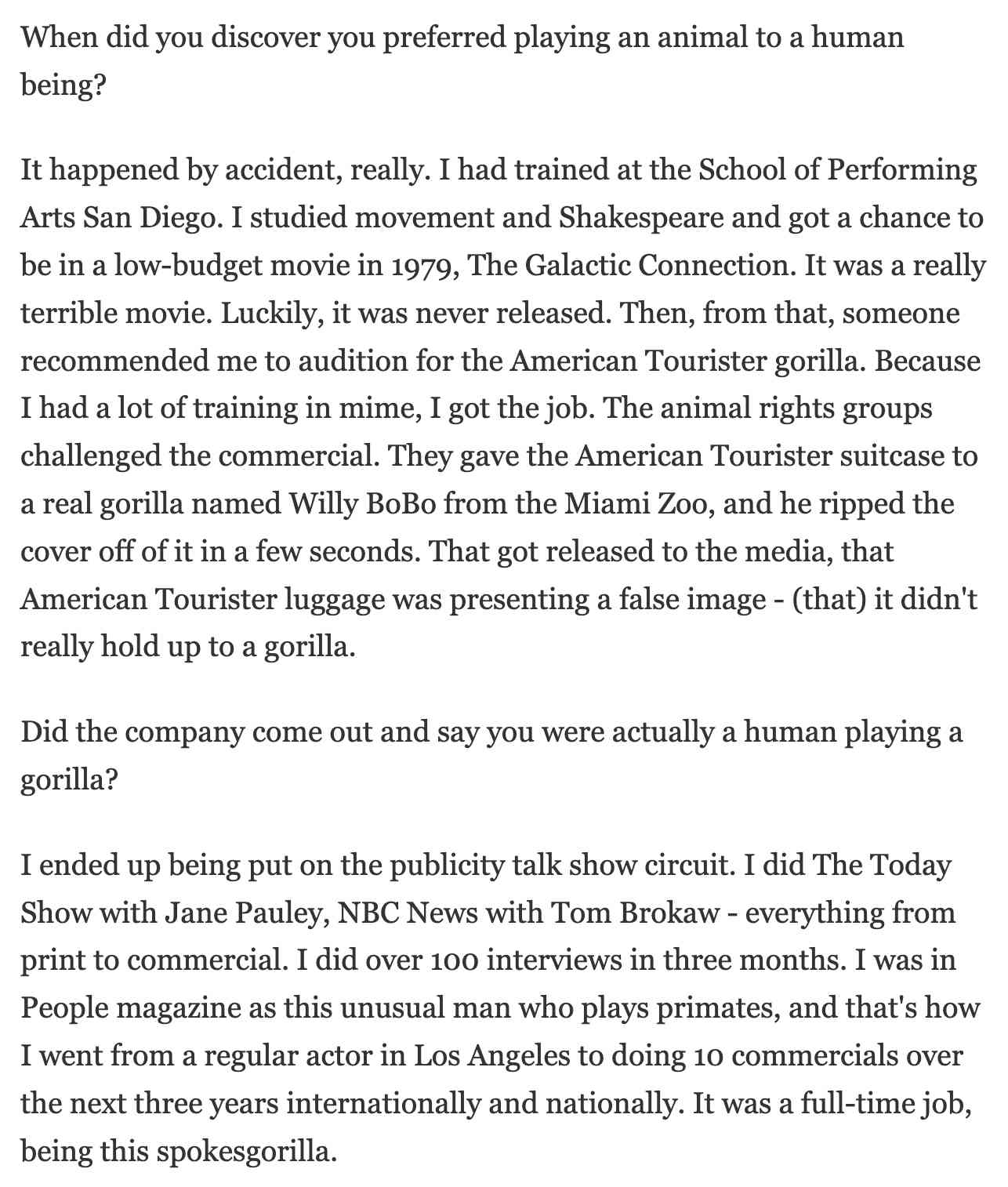
5. Knirps Umbrella: This German brand’s 1981 ad campaign put the product through an extreme test to simulate how well it would hold when people use it in heavy weather conditions!
6. Blendtec Mixers: Blendtec started its ‘Will it blend?’ series 15 years ago by throwing in marbles (and blending them)!
Since then, they have ‘blended’ everything from an iPod…
iPhone…
… and many more!
7. Volvo Trucks: Volvo probably is the most recent product demonstration success given their consistent series of videos that all have one thing in common – showcase the trucks’ best features by showing them instead of just talking about them.
The one featuring Jean-Claude Van Damme is a viral classic.
They also made similar videos where, instead of putting a celebrity like Van Damme on the ride, they put their leader, Volvo Trucks’ president Roger Alm.
8. The Pepsi Challenge: Back in the 1980s, Pepsi used in-home/in-mall blind tests as a way to showcase that people preferred Pepsi over Coca-Cola! This is a variation in the product demonstration creative device because it used real people as part of the demo.
Malcolm Gladwell, in his 2005 book, ‘Blink: The Power of Thinking Without Thinking’ contended that the “Pepsi Challenge” was flawed. As per his research, tasters will generally prefer the sweeter of two beverages based on a single sip, even if they prefer a less sweet beverage over the course of an entire can.
9. Assorted mattress brands: The mattress industry has used product demonstrations extensively to showcase various facets of how their products hold up. One of the earliest was Tempur-Pedic memory foam mattress that demonstrated the ‘Wine Glass test’, in 2008, where people jump on their mattress that also has a filled wine glass on another side! And it does not spill!
Other mattress brands copied the basic demo idea too.
Simmons used bowling balls and pins with the same premise – arrange the pins on one side of the mattress, and throw a bowling ball on the other side. The pins remain intact!
Purple invented the ‘Egg test’ and this became hugely viral! I wrote about this tactic last year on the back of the Indian brand The Sleep Company copying the tactic lock, stock and barrel (they have eventually removed their campaign, possibly owing to some action by Purple, I guess).
